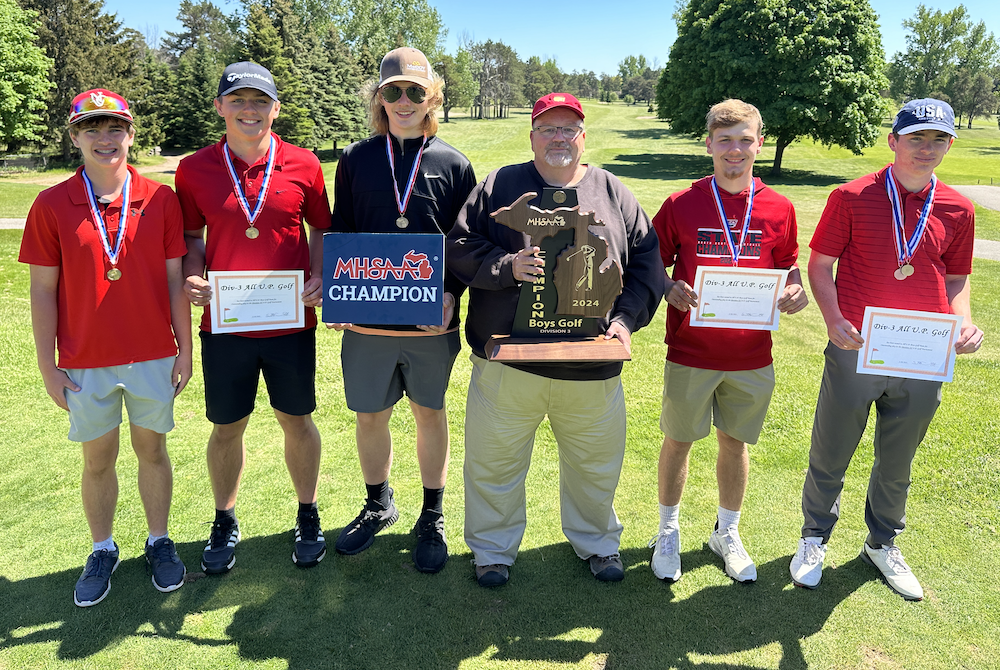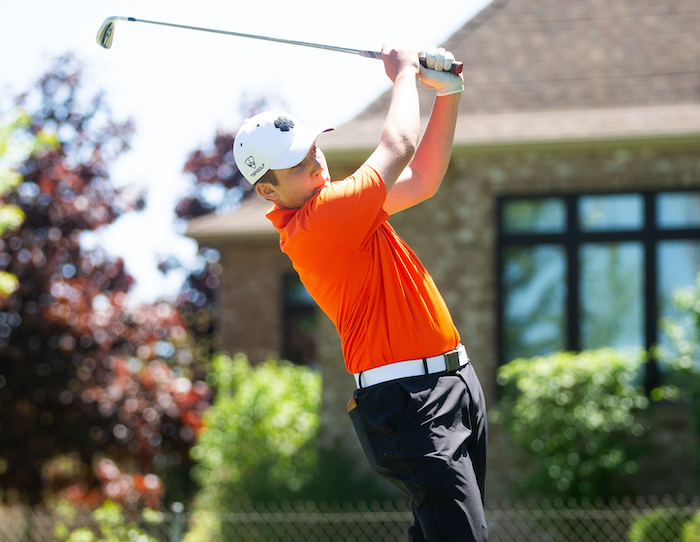
Casting Lines for Future Tournaments
August 12, 2016
By Jack Roberts
MHSAA Executive Director
The MHSAA is best known to the public for the tournaments it conducts to conclude the fall, winter and spring seasons each school year.
These tournaments, the first and largest program of the MHSAA, have survived the Vietnam War, the Korean conflict and two World Wars. They have survived the technology bubble, the housing collapse, the energy crisis and the Great Depression.
MHSAA tournaments existed at the dawn of aviation and at the time of our nation’s lunar landing. Popes, presidents and governors have changed and changed again and again, and MHSAA tournaments roll on year after year.
But the sense of tradition and permanence and inevitability of MHSAA tournaments doesn’t dissuade us from asking questions about our tournaments, even some of the most basic questions. Here are two.
Question #1
I have long been and will always be an advocate for a Ryder Cup format for the MHSAA Golf Finals, and a team tennis approach to the MHSAA Tennis Finals; but 90 years of tradition is hard to overcome. Might this be a more exciting format? Could it be co-ed? Could it reverse the decline in boys tennis participation, and increase girls golf participation? Wouldn’t it be fun to try?
Periodically, the International Olympic Committee requires each of the designated Olympic sports to defend its status, to state its case why the sport should remain a part of the Olympic program. Then, after a series or votes that retain one sport at a time, the IOC drops the sport that makes the weakest case. It does so to make room for one of the previously unlisted sports that makes the best case for inclusion.
This would appear to keep the existing Olympic sports on their toes, and to keep the Olympic movement fresh and reflective of modern trends in sports.
While I would not enjoy the controversy, I can see the potential for some positive results if the MHSAA were to invoke the same policy for determining the 14 tournaments it will provide for girls and the 14 for boys.
This might cause us to consider more deeply what a high school sport should look like, or at least what an MHSAA tournament sport should stand for.
On the one hand, we might be inclined to drop tournaments for those sports that involve mostly non-faculty coaches and non-school venues, or require cooperative programs to generate enough participants to support a team, or resort almost entirely to non-school funding, or cater to individuals more than teams.
Or perhaps this process would cause policymakers to forget traditional thinking and ask: “In this day and age, should we shake off traditional notions of sport and consider more where modern kids are coming from?” That might mean fewer team sports and more individual sports, more “extreme” sports like snowboarding and skateboarding, and more lifetime sports, meaning not just golf and tennis and running sports, but also fishing and even shooting sports.
Currently, MHSAA policy states that the MHSAA will consider sponsorship of a tournament series for any sport which 64 member schools conduct on an interscholastic basis as a result of action by the governing boards of those schools.
Should the only question be how many schools sponsor a sport, or must an activity also have certain qualities and/or avoid certain “defects?” What should an MHSAA tournament sport look like and stand for?
Question #2
Bristling from criticism that his association is a money-grabbing exploiter of children, my counterpart in another state said, “If we were running our programs just to make money, we would do very many things very differently.” I knew exactly what he meant.
Because we care about the health and welfare of students, because we mean what we say that the athletic program needs to maximize the ways it enhances the school experience while minimizing academic conflicts, and because we try to model our claim that no sport is a minor sport when it comes to its potential to teach young people life lessons, we operate our programs in ways that make promoters, marketers and business entrepreneurs laugh, cry or cringe.
If money were the only object, we would seed and select sites to assure the teams that attracted the most spectators had the best chance to advance in our tournaments, regardless of the travel for any team or its fan base. If money were the only object, we would never schedule two tournaments to overlap and compete for public attention, much less tolerate three or four overlapping events. If money were the only object, we would allow signage like NASCAR events and promotions like minor league baseball games.
Those approaches to event sponsorship may not be all wrong; they’re just not all right for us. And we will live with the consequences of our belief system.
During a typical school year, more than 20 percent of the MHSAA’s 2,097 District, Regional and Final tournaments lose money. Not a single site in golf, skiing or tennis makes a single penny. In no sport did every District, Regional and Final site have revenue in excess of direct expenses.
In fact, in only three sports – boys and girls basketball and football – is revenue so much greater than direct expenses overall that it helps to pay for all the other tournaments in which the MHSAA invests.
That’s right: invests. When we present our budget to our board, we talk about the MHSAA’s investment in providing tournament opportunities in all those sports and all those places that cannot sustain the cost of those events on their own. How much is this investment worth to students, schools and society?
These two are core questions that require our focus far in advance of talk about scheduling, site selection, seeding and the myriad matters that too often hijack our time and attention.

Mid Pen Senior Wins Family Matchup, North Central Takes Back Team Title
By
Jason Juno
Special for MHSAA.com
May 30, 2024
ESCANABA – Rock Mid Peninsula’s Bradly VanDamme doesn’t get much better competition than what his eighth-grade brother Christian brings to the golf course.
Last year, Bradly’s only win against Christian came at the Upper Peninsula Division 3 Final. This year, Bradly finished ahead of his brother in every event leading up to the championship tournament, but a second consecutive U.P. title still wasn’t a sure thing as Bradly wound down his senior year.
“We were waking up this morning, and we didn’t really know who was going to get it,” Bradly said. “We’ve been tight all year.”
Bradly came out on top with a 73, and Christian finished runner-up with a 76 on Thursday at Escanaba Country Club.
“It’s sweet,” Bradly said of claiming two straight U.P. Finals titles. “It’s what I dreamed of. Just grinding all summer long, especially all spring and the winter going with my buddies and hitting the simulator. It’s just what you strive for.”
He said he got off the tee well all day.
“I just put myself in some good positions,” he said. “If you can get off the tee well, this course is relatively short.”
 His mom, and coach, Earlene VanDamme, said he’s done well in every tournament this season.
His mom, and coach, Earlene VanDamme, said he’s done well in every tournament this season.
“He’s a strong player and he put a lot of development into it this past year, and it’s paid off again,” she said.
His practice and hard work got him where he is, she said. So did a little motivation from his brother.
“I think that is a good driving force,” she said.
Bradly VanDamme said his brother’s game is strong overall.
“He’s got a very bright future,” he said.
Powers North Central won the Division 3 team title with a score of 338, and Lake Linden-Hubbell was second at 349. The title was the Jets' second in three seasons.
“This is kind of sweet,” North Central coach Scott Farnsworth said, while choking up. “Good group of kids. I have 12 kids out, all very enthusiastic, these guys work hard for me all the time.”
He knew they had a good chance of winning going into the event. The Jets lost four times to Division 2 schools in their conference but were close to them each time.
“This whole group, you hear of gym rats, these guys are golf rats,” he said. “We get done with the meet, they’re going to play another 18. They are really nice to have, they get out there, do whatever I ask. They just get out and play. That’s what you’ve got to do.”
North Central was led by Alex Popkorn, who carded an 82 and finished in a tie for fourth individually. Lake Linden-Hubbell’s Bradley Axford was third with a 78 and Cedarville/DeTour’s Drew Moser also tied for fourth with an 82.
PHOTOS (Top) Powers North Central holds up its latest championship trophy Thursday at Escanaba Country Club. (Middle) Mid Peninsula’s Christian VanDamme sends an approach shot on No. 13. (Photos by Jason Juno.)

